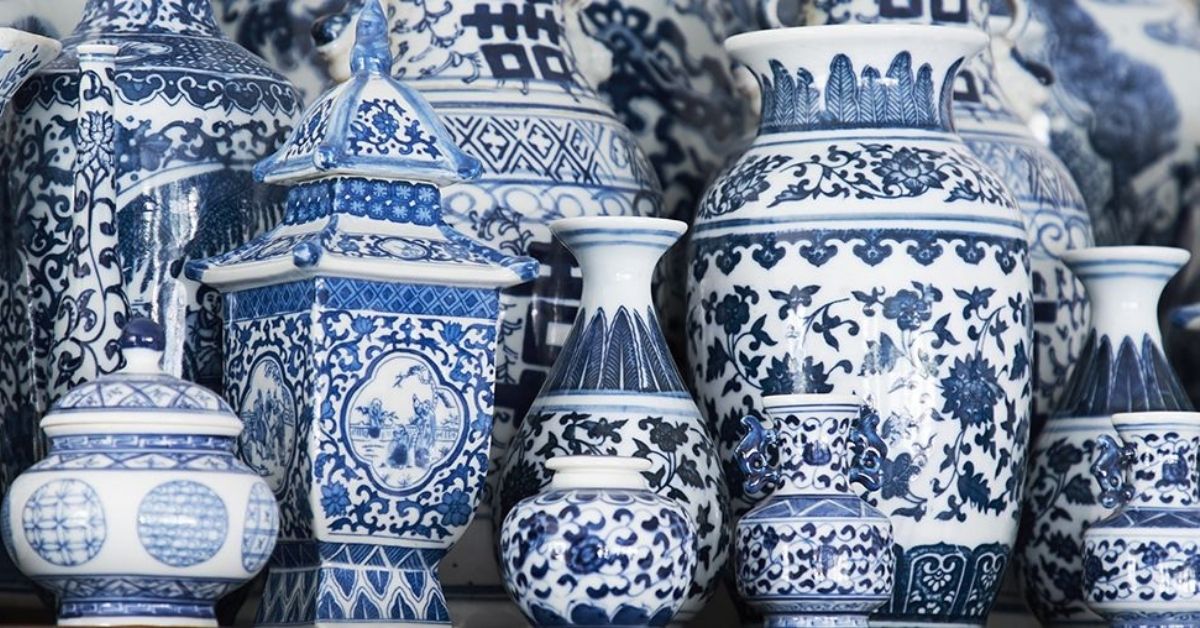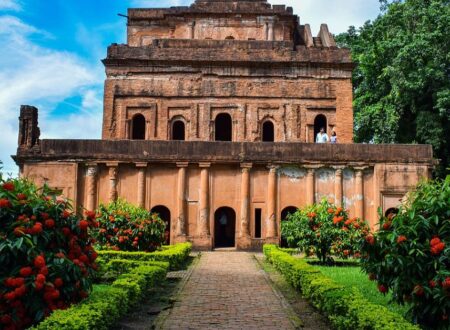India possesses a culture that is deeply rooted in history & traditions. In addition, it is home to various traditional craftsmanship that provide us with an exotic and artistic range of products. The ancient Romans, the Greeks, the Mesopotamians visited India because back then, Ancient India was the hub of passionate and lively art. In this blog, we shall list out 10 unique craft forms of India:
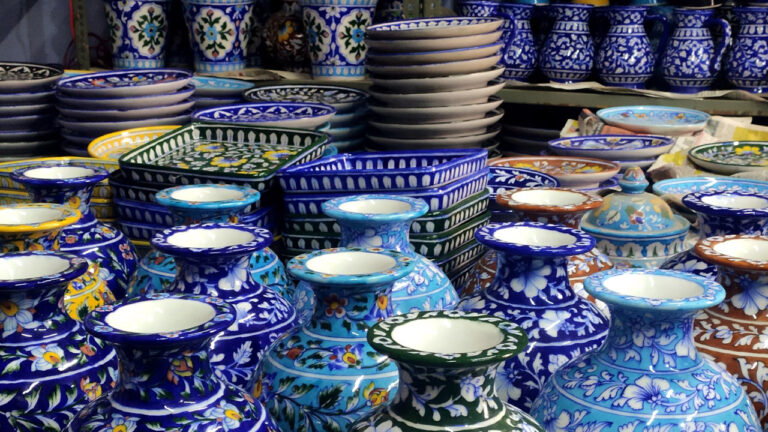
1. Jaipur Blue Pottery, Rajasthan
- Origin & History: Although Turko-Persian in origin, the story of blue pottery in India starts with Sawai Ram Singh, Ruler of Jaipur who the art of making blue colored pottery to the kingdom of Jaipur.
- Speciality: The eye-catching blue color is derived from a dye made from Multani mitti aka fuller’s earth, coupled with quartz, sodium sulfate, and raw glaze.
- Current Status: The once-flourishing blue pottery industry is suffering due to the COVID pandemic and has “remained stagnant for two years, putting several of the artisans jobless”.
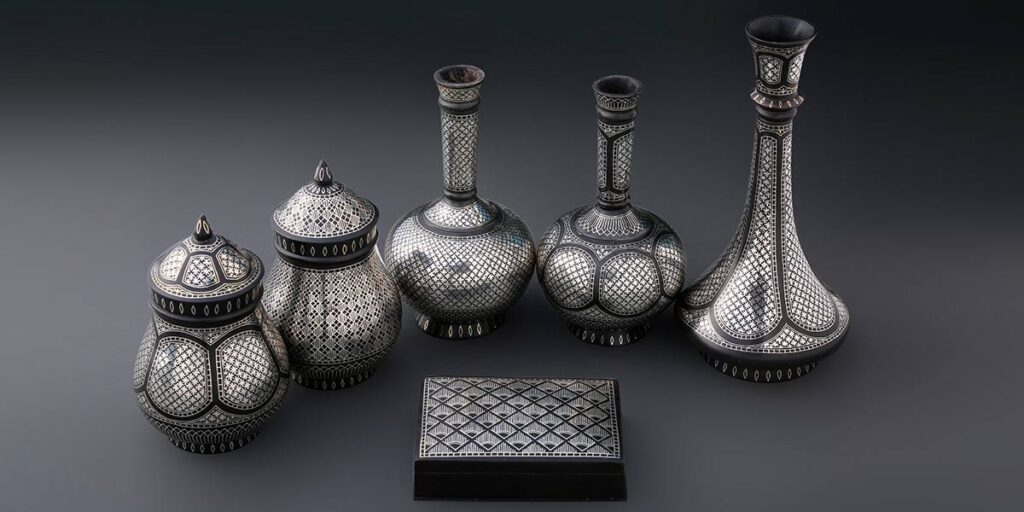
2. Bidriware, Karnataka
- Origin & History: As a matter of fact it originated in the 14th century AD ancient Persia, the Bidri art came to India as a blend of Persian and Arabic cultures. Later on, it was stylized with native designs and was now its own new & unique style.
- Speciality: Bidriware includes a tedious 8-stage process where the craftsmen use silver to engrave handmade designs like flowers, leaves, and patterns onto the day-to-day vessels.
- Current Status: Entered into the Geographical Indications(GI) registry; owning this craft form is well-regarded and sees a good future ahead.
Read about the challenges faced by Indian artists- https://indiachalk.com/blog/the-untold-story-of-indian-artists/
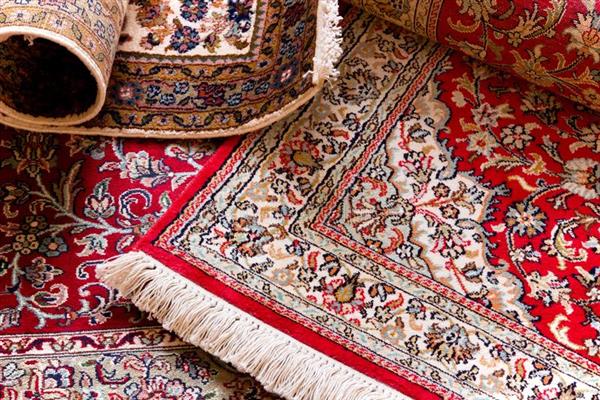
3. The Hand-Knotted Carpets of Kashmir
- Origin & History: Natively named as ‘Kal Baffi’, the art of handmade carpets dates back to the 15th Century. Sultan Zain-ul-Abidin, the Akbar of Kashmir hired professional carpet weavers from Persia and Central Asia to come and train the local Kashmiri natives.
- Specialty: Kashmiri hand-knotted carpets are very durable. It is because the more knots there are per square inch, the higher quality of carpet it is. Some carpets are rare exhibits; it requires high skill & patience and the end result is only showcased as museum pieces.
- Current Status: Sadly, the Kashmiri Rug Industry is struggling mainly because of negligence, volatile political scenarios & flagrant exploitation of small business owners by conglomerates.
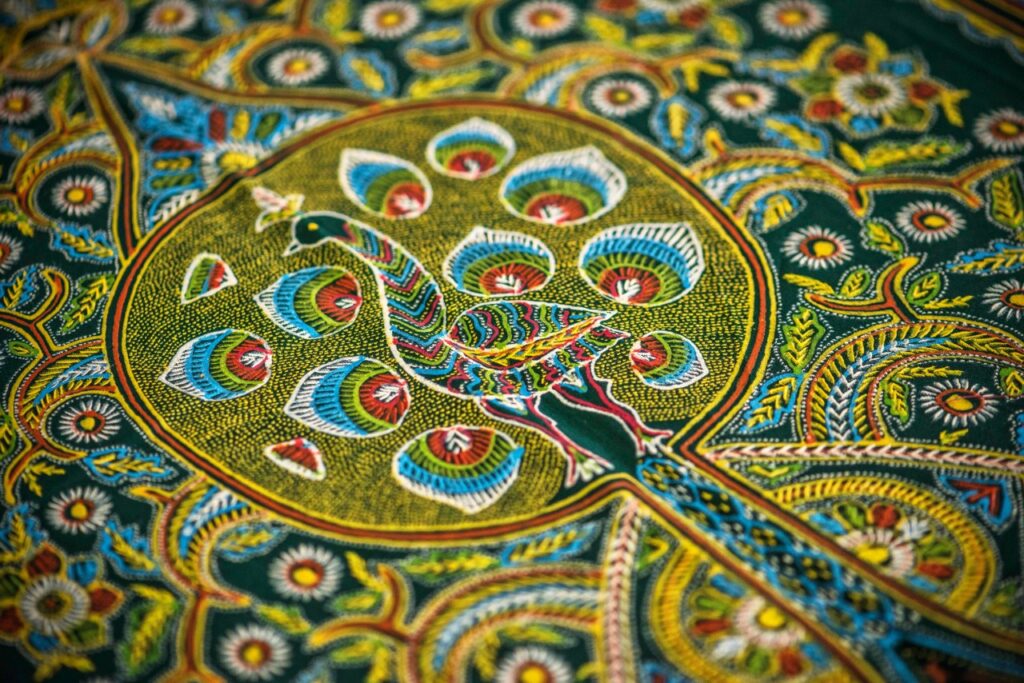
4. Rogan Painting
- Origin & History: The local legend about Rogan Painting says that it came to India from Syria. Once in India, the art of Rogan painting dominated the textile markets. Different places improvised the paints and each variation became its own style.
- Speciality: The process of Rogan Painting on the fabric is a tedious & time-consuming craft, to say the least. That’s because it is handmade, which requires minimum 12 hours before one can use the paint.
- Current Status: Endangered. The introduction of machine-made has left only nine members of a Khatri family in Kutch, Gujarat is the last surviving keepers of the art form’s legacy.
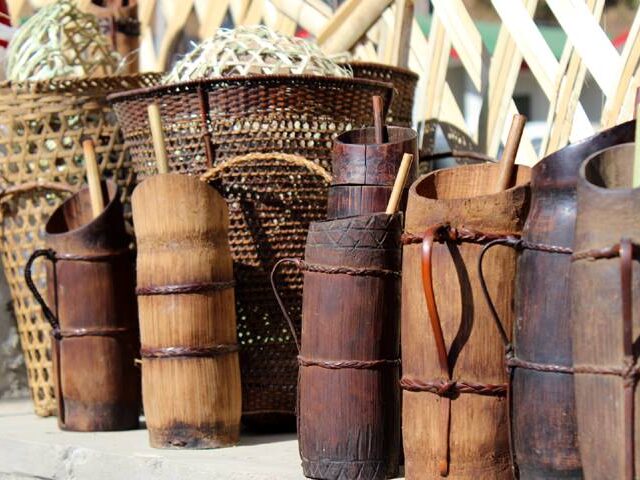
5. Naga handicraft of Nagaland
- Origin & History: Originated from Nagaland, the land of Nagas is famous for its tribes, sprawling local communities and a roaring trade of locally-made handicrafts.
- Speciality: The most special thing about the Naga handicrafts is that their traditional attires are a mark of wealth & status for the wearer. Whether it is basketry, weaving, woodcarving, pottery or metalwork; the Nagas make their own cloth, hats, raincoats, medicines, cooking vessels and crockery.
- Current Status: Currently, it plays a critical role in sustaining the native indigenous communities of Nagaland. Moreover, the famous hornbill festival rakes in tourists in droves and helps in keeping the Naga history alive & well.
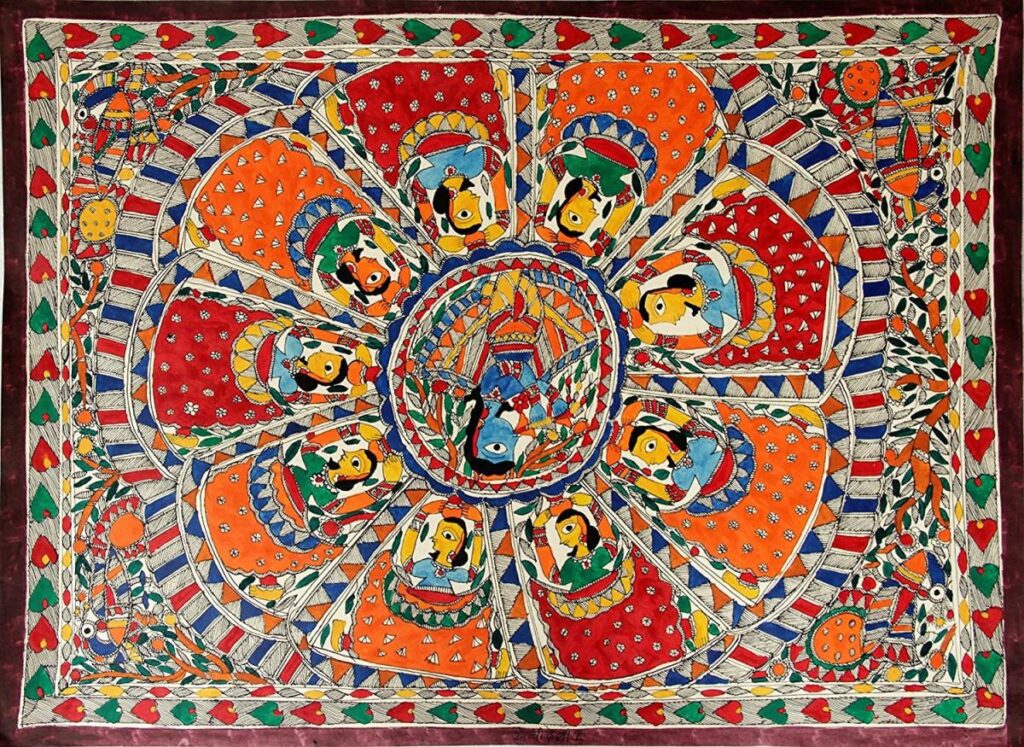
6. Madhubani Painting of Mithila
- Origin & History: Madhubani paintings are originally from Bihar’s Mithila region. Ramayan also has references of this art form.
- Speciality: Firstly, the fact that they only use objects like matchsticks, twigs & fingers to create the paintings is amazing! Not only this but the painters derive their paints from plants and surrounding natural sources i.e. zero carbon footprint.
- Current Status: The future of Madhubani paintings 2021-2022 is looking good so far. Especially with the upcoming Madhubani Literature Festival 2021.
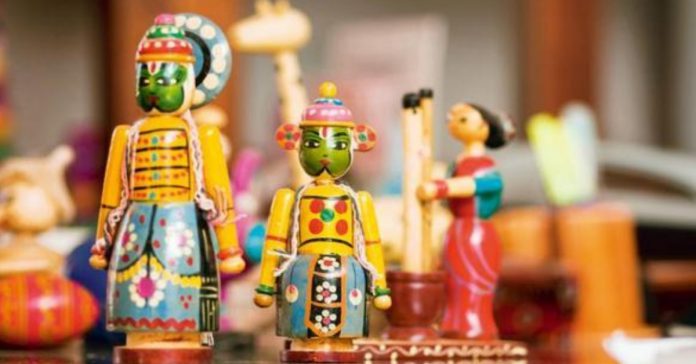
7. Channapatna Toys of Karnataka
- Origin & History: Popularly known as the Gombegala Ooru or the ‘toy town of Karnataka’, Channapatna is based 60kms away from Bengaluru and is famous for its handmade wooden toys. The legend says that the Ruler of Mysore, Tipu Sultan, invited Persian artists to train the natives with the art of making wooden toys.
- Speciality: They are very strong and durable because of the export quality ivory wood. Also they are highly eco-frinedly since the natural, non-toxic dyes goes into the making of paint.
- Current Status: These toys are in the Geographical Indication (GI) registry, courtesy of the Karnataka Government. Well-known across the world, the media remains instrumental for promoting the local handcrafts industry.
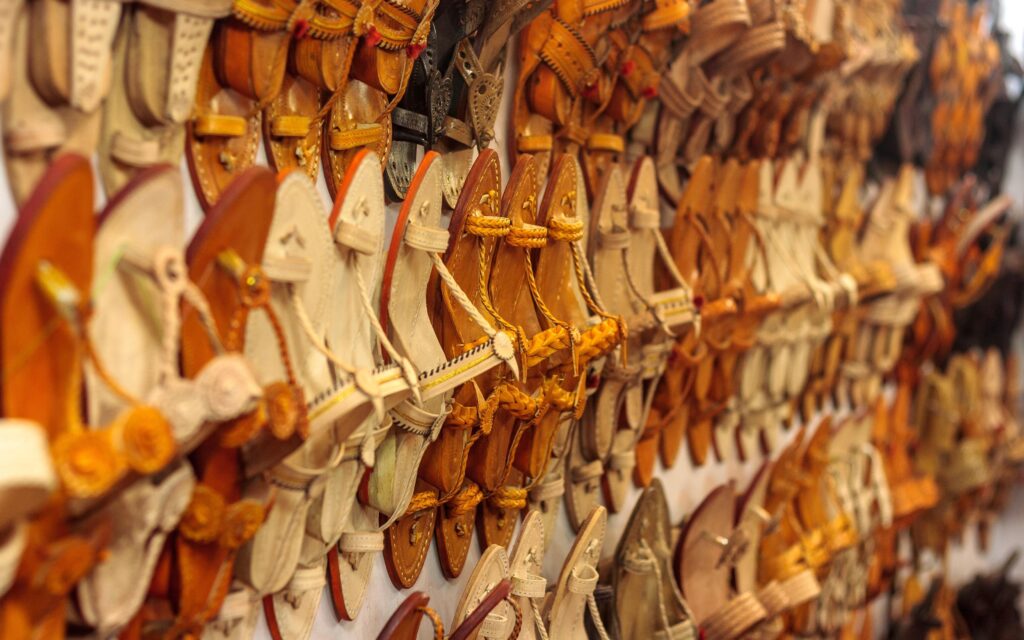
8. Kolhapuri Chappal, Maharashtra
- Origin & History: Originating from Maharashtra’s Kolhapur town. However, the globally-renowned handmade footwear came into existence in the 13th century where the Saudagar family designed and made the original Kolhapuris using the hide of buffalos.
- Speciality: Previously, the whole chappal, with a thick sole, weighed approx 2 kgs that could withstand extreme temperatures and rugged terrains. These are highly attractive and many people wear it in the weddings and formal parties.
- Current Status: In the current market, the Kolhapuri chappals are fighting for their survival owing to the competition from top-tier brands.
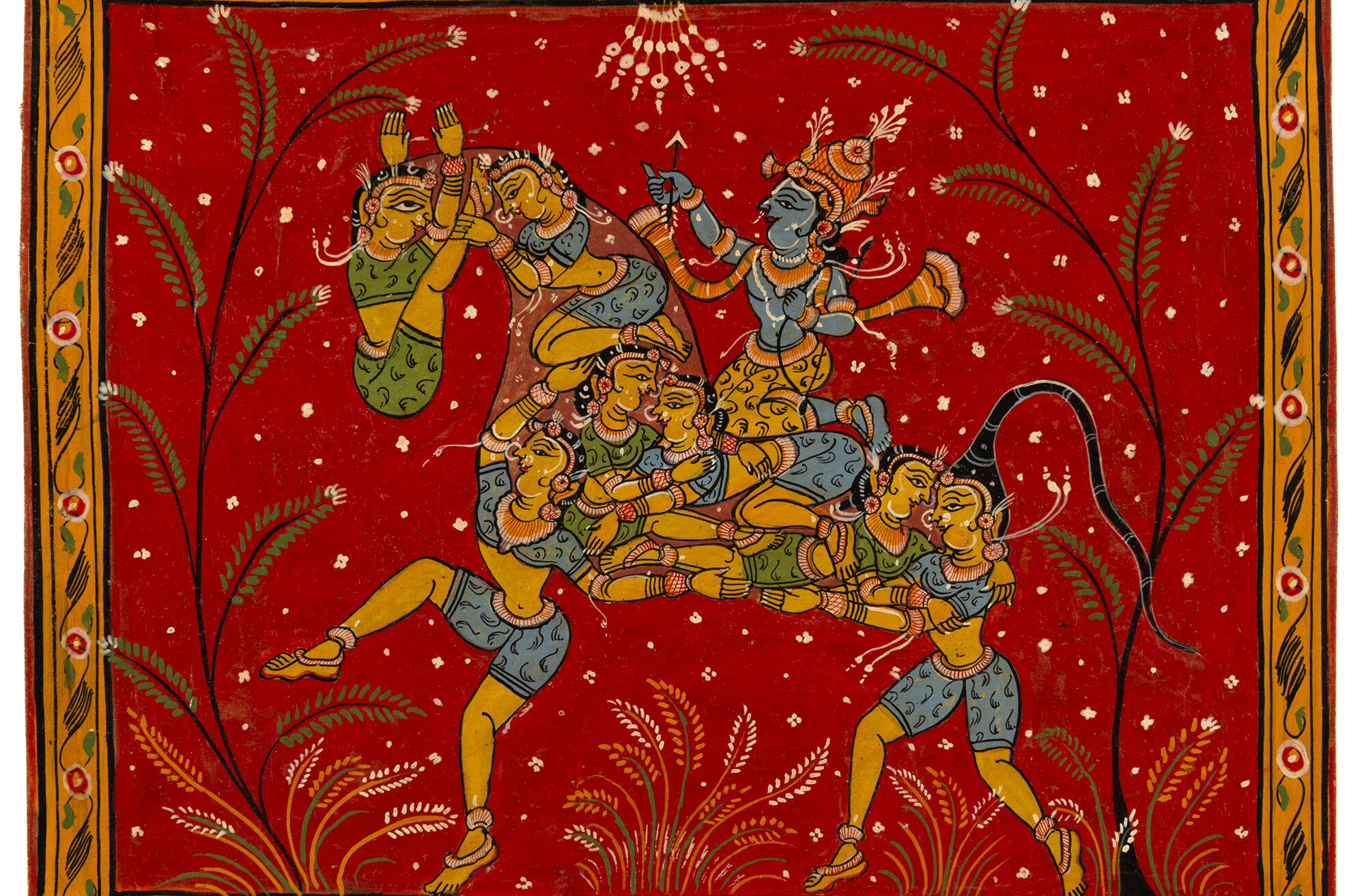
9. Pattachitra from Odisha & West Bengal
- Origin & History: ‘Pattachitra’ comes from the Sanskrit words ‘Patta’, meaning cloth, and ‘Chitra, meaning picture. Originating in the 12th centur; it is one of the oldest art forms that were mentioned in Hindu mythology.
- Speciality: The speciality of Pattachitra lies in its discipline and its own set of strict guidelines. For example, in a Pattachitra; floral borders have only natural colours which helps in creating a distinct look; and cannot be duplicated.
- Current Status: Currently, the Pattachitra industry is booming; mainly since this art form is now being used for sarees, household accessories & crockery as well as on shoulder bags and even stationary.
Love Chikankari? Read about the Chikankari community in Lucknow- https://indiachalk.com/blog/why-visit-lucknows-chikankari-artists-community/

10. Ganjifa
- Origin & History: Originating in Persia, Ganjifa comes from the Persian word ‘Ganjifeh,’ meaning, ‘playing cards’. Introduced in the 16th century India by the Mughals, slowly this card game spread like wildfire and soon the Indian states came up with their own versions of Ganjifa, the most famous being the Mughal Ganjifa and the Dashavatara Ganjifa.
- Speciality: The hand-painted Ganjifa cards had two versions; firstly, the ‘Darbaar Kalam’, made for the rich out of rare gems and metals. Lastly, the ‘Baazaar Kalam’ was made for the general public and made with wood.
- Current Status: After the advent of plastic playing cards, unfortunately, the Ganjifa is barely surviving. Luckily, some initiatives have been launched. In the hopes that people will support the revival of endangered craft forms in India.
Despite all the constraints faced by the indigenous craftsmen across the country, we must strive to recognize the unique Indian craft forms as our legacy. What is your favorite unique craft form of India? Comment down below!
Also follow India Chalk on Instagram for more amazing travel content. You can share your travel story with us. Reach out to us on email at contact[at]ndiachalk[dot]com. This blog is curated by India Chalk and written by Aishwarya D.

